
New Challenges for Product and Production Engineering
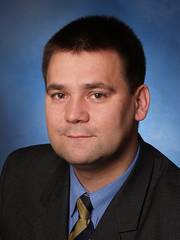
Dr. Ralf Ackermann
After having studied Computer Science at TU Chemnitz and working in industry for debis Systemhaus, Ralf Ackermann received a PhD for his thesis on „Gateways and Components for IP Telephony Services in Heterogeneous Environments“ at TU Darmstadt. He is the author of a number of peer reviewed publications in the area of Multimedia Communication, lead the research group on „Ubiquitous Communication“ as a Post-Doc and has been active in the Linux and Open Source area for many years.
In 2006 Ralf joined SAP where he initiated and lead multiple highly visible research activities related to the Internet of Things (IoT) as well as information federation along the lifecycle of products and the usage of Semantic Technologies. He actively contributed to the acatech study that set the scene for recent Cyberphysical Systems (CPS) and Industry 4.0 activities.
Right now Ralf and his team work on the design and implementation of the IoT activities at SAP AG.
Keynote Abstract:
How to be a successful player in the Internet of Things and Industry 4.0
“Internet of Things” as well as “Industry 4.0” are terms that you can meanwhile read and hear almost ubiquitously. New hardware, software, solutions and innovative value generating processes appear with a very high dynamic and people are even talking about “another industrial revolution”.
The keynote will highlight challenges in this context and discuss how solutions can and will cover the whole lifecycle of products and items starting from idea generation to final dismantling, re-use or disposal. It will show that it is necessary to enable software developers, system integrators and end users with an appropriate methodology and tooling to efficiently build, deploy and operate innovative solutions.
While an heterogeneity of approaches is expected to further persist and even offer valuable chances and benefits there is an on-going trend towards the usage of universal and interoperable mechanisms instead of the further application of isolated "stove pipe like" solutions for different domains. Representative examples from recent activities will demonstrate how this is currently addressed in an industrial context.
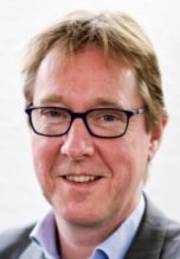
Prof. W.A. (Pim) Groen
Pim Groen is working at Holst Centre - TNO on printed flexible electronics as program manager “Large Area Printing” and “Printed Conductive Structures”. He is also part time full professor on Smart Materials at Delft University at the faculty of Aerospace Engineering. He studied chemistry at Leiden University and did his PhD on ceramic cuprate superconductors. Hereafter, he worked for Philips Research on inorganic materials and ceramics for lighting and passive component applications. In 2002 he moved to Morgan plc. working on piezoceramics and in 2008 he joined TNO. He is the author more than 70 publications, two books and holds 19 patents.
Keynote Abstract:
Printed electronics – from simple circuitry to integrated devices
Daniella Deutz1, Robert Abbel2, Erik Tempelman3 and Pim Groen1,2
1TU Delft, Novel Aerospace Materials, Aerospace Engineering, Kluyverweg 1, 2629HS Delft, The Netherlands.
2TNO, Holst Centre, High Tech Campus 31, Eindhoven, The Netherlands.
3TU Delft, School of Industrial Design Engineering, Landbergstraat 15, 2628CE Delft, The Netherlands
The field of printed electronics is quickly developing. RF-ID tags and smartcards can already be made by printing technologies on low cost polymer foils by roll to roll production (R2R). In the next phase, products like organic LEDs (OLEDs) and solar cells (OPV) are targeted to be produced by R2R techniques through stacking of functional layers by printing and coating technologies.
In this presentation an overview will be provided of the work at the Holst Centre in the field of printed electronics. Holst Centre is an independent open-innovation R&D centre that develops generic technologies for Wireless Autonomous Sensor Technologies and for Flexible Electronics.
To come to more complex products, sensor materials will need to be integrated in the printed products. Our work on flexible piezoelectric materials will be addressed in the second part of the presentation. Finally, the integration of touch sensitive sensors in a flexible OLED will be discussed, which is part of our Light-Touch-Matters EU program.
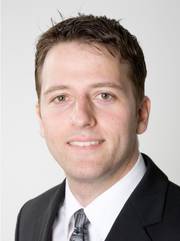
Dr.-Ing. Kai Litwinski
Kai Litwinski studied mechanical engineering with a focus on production automation at the Leibniz Universität Hannover. During this time he spent a semester at the Keio University in Yokohama, Japan and another at the Laboratory of Manufacturing Automation of the University of California, Berkeley. Afterwards, in 2005 he became a research assistant in the Institute of Production Engineering and Machine Tools (IFW) of the Leibniz Universität. In this course he received his doctors degree in 2011 on the topic of sensor integration and process monitoring. Since then he is head of the research cluster “Pro³gression” and department “Machine Structures” of the IFW focusing on new machine tool concepts and compensation of machine tool errors.
Keynote Abstract:
Application of gentelligent components in production engineering – Inherent Systems for “Industry 4.0”
Industry 4.0 describes the trend of computerization and application of networks of embedded systems in manufacturing industries. This talk gives an overview of the CRC 653 “Gentelligent Components in their lifecycles” and explains how it approaches these topics. In contrast to conventional embedded systems, where electronics are attached to components, in Gentelligent (GI) components the separation of virtual information and real component is removed. Information becomes an inherent part of every com¬ponent. This capability is not limited to storing data. GI components can sense, communicate, and use the existing information.
These properties are an enabler for smart factories. GI workpieces search for the optimum way through the production. In cooperation with “feeling machine tools” they assess their own status, predict the process outcome and evaluate the result afterwards. The information gathered throughout production is further used in the remaining lifecycles and inherited to subsequent generations.
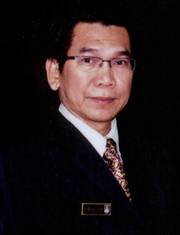
Professor Ir. Dr. Hj. Abdul Rahman Omar
Abdul Rahman is a Professor at the Faculty of Mechanical Engineering, Universiti Teknologi MARA (UiTM), Malaysia. Abdul Rahman holds an Advance Diploma in Mechanical Engineering from the same University an equivalent honours degree, Masters of Science – Control Systems from Sheffield University, United Kingdom. Doctor of Philosophy – Computer Integrated Manufacturing from Loughborough University, United Kingdom. He is also a registered professional engineer with the Board of Engineers Malaysia.
Prior to joining UiTM, Abdul Rahman served as Executive Officer in East Asiatic Company (M) assisting Plant Manager in the supervision of processing and production lines, developed quality controls and implementing the ‘Local Content Program’. He has also served in OYL Industries Sdn Bhd as an Air conditioning Engineer where he is responsible in the development of new refrigeration model and quality controls for the product. In UiTM he has contributed his expertise in many Units and Centres as the Head of Units. His previous post was the Dean of the Faculty of Mechanical Engineering. With his vast experience and charismatic leadership he has placed the Faculty to become the prominent faculty in UiTM where the faculty has won the vice chancellor award in all categories. Currently he is the Deputy Vice Chancellor of Research and Innovation.
Abdul Rahman specialized and researched in mostly systems and knowledge engineering and he has produced more than 100 publications in the area of quality function deployment, knowledge based modeling, ergonomics design and system identification. His active involvement in research has obtained recognition from various government funded agencies and has been receiving research grants. He has also participated in invention competition both national and international levels and has won awards and recognition in each of the event.
Keynote Abstract:
Humanoid Research for Brain Impairment
The brain is at the core of our exceptional competence, emotional world and thinking systems. However the brain is also the source of many diseases such as autism, Alzheimer’s and Parkinson’s. Presently, no cure exists for such diseases. Nevertheless, education, therapy and care are able to help improving the condition of the patients. In this context, there is growing evidence that humans respond positively to humanoid robot interventions. We propose to characterize the key interactions between humanoid robots and autism subjects, formulate the technological environment, and define the social and ethical impact of the humanoid-based therapy and rehabilitation. A special focus is an augmentation of the healthcare approach with spiritual and cultural values. With the robotic intervention, it is hopeful that the quality of life of the patients can be improved and they will gain more independence in their daily life. The project is a truly interdisciplinary research initiative targeting at future commercial potential for long-term sustainability with international collaborations.
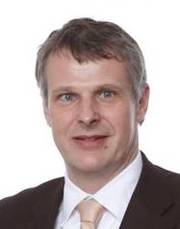
Prof. Dr.-Ing. Ludger Overmeyer
Professor Overmeyer obtained his diploma (“Dipl.-Ing.”) in electrical engineering from Hannover University in 1991, and a PhD degree (“Dr.-Ing.”) in laser engineering process control from Hannover University in 1996. From 1991, he worked as research assistant at Laserzentrum Hannover (LZH) and became head of the department “Machines and Control” in 1994. In 1997, Professor Overmeyer began as project manager in the industry within the department of research and development at Mühlbauer AG, where he became head of research and development in 1998. Since 2002, he is full professor for transport and automation technology at Leibniz University Hannover and director of the Institute for Transport and Automation Technology, Leibniz University Hannover.
His management roles include member of the board at Production Engineering Center Hannover (PZH, since 2003; chairman 2003-2004, and since 2010), Institute of Integrated Production Hannover (IPH, since 2007), and LZH (since 2010). In 2012, Professor Overmeyer also became chairman of the Collaborative Research Center “Transregio 123 – Planar Optronic Systems” and in 2013, managing director of LZH. He is founding member of the Scientific Society of Technical Logistics (WGTL), member of the cluster of excellence Quest, and registered associate of the Scientific Society of Lasertechnology (WLT). Professor Overmeyer is member of different advisory boards.
Keynote Abstract:
On the way to Planar Optronic Systems
Our vision is to provide sensor technology on a large-scale, just 100 μm thick, flexible polymer foil manufactured on an industrial scale. We research on polymer foils that are equipped with sensors throughout, eliminating the need for electronic components. All sensors function optically, and indicate changes in parameters such as temperature and strain in properties of light. Applications range from aviation and construction surveillance to the molecular analytics in life sciences.
Tailor-made materials for constructing optical waveguides and substrates, process-adaptable radiation sources and sinks and the improvement of existing sensor technology such as Arrayed-Waveguide and fiber Bragg gratings as well as the development of concepts and simulations of the creation, transport and processing of light signals in sensor networks. In addition, our work concentrates on the realization of a cost- and resource-efficient mass production.
To summarize the scientific goals of our Collaborative Research Center “Transregio 123 – Planar Optronic Systems” (PlanOS), we stand for the research on and characterization of novel materials used in polymer-based, optical sensory, the realization of suitable polymers and micro-optical components in optical quality, the coupling and integration of structures and components into a largescale 2D sensor array, and the simulation of sensor networks dependent on relevant system and external parameter.
PlanOS is funded by the German Research Foundation (DFG). Project partners are the Leibniz Universität Hannover, the University of Freiburg, the Laser Zentrum Hannover e.V., the Clausthal University of Technology, and the Technische Universität Braunschweig.
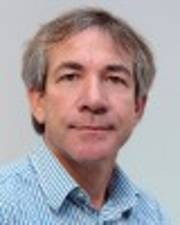
Willy Van Puymbroeck
Willy Van Puymbroeck holds a PhD in Physics (1981) and an MBA (1986).
Before joining the European Commission in 1988, he worked as a software researcher in Alcatel Bell from 1982 to 1988.
In the Commission Willy Van Puymbroeck worked in various areas going from Computer Integrated Manufacturing, International Cooperation to Budget Implementation.
He is currently Head of Unit in DG CONECT 'Components' covering strategy and R&D&I in micro- and nanoelectronics and smart integrated systems.
Keynote Abstract:
Smart System Integration in EU research - results, trends and opportunities
At first an overview of research on Smart Systems Integration in the EU Research Framework Programme 7 will be given. This will indicate the topics, the funding and some of the main results obtained in the projects that have been funded in the period from 2007 - 2013. Then the novelties in the new HORIZON 2020 research programme with its focus on innovation will be presented. Special attention will be given public private partnership ECSEL (Electronic Components and Systems for European Leadership) which includes smart systems as one of its main areas of research.
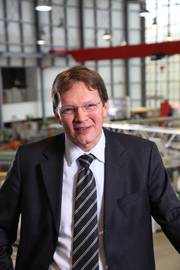
Prof. Dr.-Ing. Klaus-Dieter Thoben
Prof. Dr.-Ing. Klaus-Dieter Thoben is full professor for integrated product development at the faculty of production engineering at the University of Bremen, Germany. He is also managing director of the BIBA and spokesman. He is also spokesman for LogDynamics aiming at strengthening the field of logistics in the Bremen area. Furthermore, he is the representative of the University of Bremen in several boards, like on wind energy, logistics and product development. Klaus-Dieter has more than 20 years of experience of working in large international research projects, and has also managed several projects at national and international level. His teaching domain is related to product design and development as well on organizational issues related to distributed production. Major publications and main research activities address co-operative processes with a specific focus on product-based innovations, product and service engineering, product lifecycle management and collaborative enterprise networks.
Keynote Abstract:
Applying Industry 4.0 in Production and Logistic Systems
Compared to the previous industrial revolutions (mechanization, electrification and computerization), the fourth industrial revolution is already postulated, although the technological development and the implementation is at an early stage. What kind of "revolutionary" upheavals will appear can only be a guess nowadays. However, it is indisputable that in the course of increasing automation and real-time control systems production and logistics processes as well as the work content and the interaction between humans and machines will change. Additionally, Industry 4.0 will enable new forms of services (extended products) and, thus, the value added through services will increase. Due to innovative capability and competitiveness base on technical conditions as well as on organizational aspects, a purely technological perspective on the changes is insufficient in the context of Industry 4.0. Therefore, this talk will take up on both the technological and organizational potentials, which are subsumed under the heading of "Industry 4.0" as well as the question of the changing work content in enterprises, especially in the context of production and logistics. Best practices from current research projects are transferred into the competence and dissemination center “Industry 4.0” in Bremen. At the Bremen Research Cluster for Dynamics in Logistics, especially in BIBA - Bremer Institut für Produktion und Logistik, scientists bundle their know how in this regional competence and dissemination center. There will be done research on the methodical and technological foundations of the so-called cyber physical systems and innovative process design on the one hand and there will be worked on deployment strategies as well as the development of new business models on the other hand.

Dipl.-Wirt.-Ing. Mareen Vaßholz
Dipl.-Wirt.-Ing. Mareen Vaßholz is a research associate at the chair of Product Engineering (research team “Design Methodology for Mechatronic Systems / Systems Engineering”) of the Heinz Nixdorf Institute in Paderborn. She has been the manager of the Collaborative Research Centre 614 “Self-optimizing concepts and structures in mechanical engineering”, which builds the basis for the Leading Edge Cluster “Intelligent Technical Systems OstWestfalenLippe” (it´s OWL). She received a Diploma degree in Industrial Engineering and Management (focus on: mechanical engineering) from the University of Paderborn, Germany. Her current research field is model-based systems engineering and self-optimization.
Keynote Abstract:
The Development to Intelligent Technical Systems
The mechanical engineering industry and related industries such automotive industry are undergoing a massive shift from classic mechanic-centred products to mechatronics. The technical systems of tomorrow will go beyond current mechatronics by incorporating inherent intelligence. Information technology and non-technical disciplines such as cognitive science, neurobiology and mathematical optimization are developing a variety of methods, technologies and procedures that integrate sensors, actuators and cognitive functions into technical systems. We call such systems Intelligent Technical Systems. Keywords such as “Things that Think”, “Cyber-Physical Systems”, “Industry 4.0” or “Self-Optimization” express this perspective of Intelligent Technical Systems.
In this contribution, we will present the German Leading-Edge Cluster “Intelligent Technical Systems OstWestfalenLippe” (it´s OWL) and its underlying technology concept, which describes the innovation leap from mechatronics towards intelligent technical systems by a powerful cooperation between industry and universities. Particularly, we show which potentials tomorrow’s systems will have by the integration of the paradigm of self-optimization into mechatronic systems.
Invited Talks
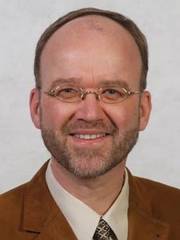
Dr. rer. nat. habil. Ralf B. Bergmann
Ralf B. Bergmann is a Professor at the Faculty 1 of Physics and Electrical Engineering of the University of Bremen and Managing Director of the Bremer Institut für angewandte Strahltechnik (Institute of Applied Beam Technology). From 1988 till 1991 he wrote his Doctoral thesis at the Max Planck Institute for Solid State Research in Stuttgart, topic: "Silicon layers on silicon dioxide – production and characterisation of multilayer systems" and awarded a PhD in Physics in 1991. Later he was Head of "Applied Physics" Department at the Corporate Research and Development Centre of Robert Bosch GmbH in Gerlingen and Head of Physical Analytical Laboratory Department dealing with quality management in the automotive electronics business unit at Robert Bosch GmbH in Reutlingen.
Abstract:
Nanophotonics in Three Dimensions: Heading from Microelectronics towards Optical Computing
R. B. Bergmann1,2,6*, V. V. Parsi Sreenivas6, M. Bülters1, A. Garcia-Ortiz3,6, J. Gutowski4,6 and W. Lang5,6
1 Bremer Institut für Angewandte Strahltechnik (BIAS) GmbH, Klagenfurter Str. 2, D-28359 Bremen, Germany
* Presenting and corresponding author: bergmann@bias.de
2 Microsystems Center Bremen (MCB), Photonic Microsystems
3 Institute for Electrodynamics and Microelectronics, Group of Integrated Digital Systems
4 Institute of Solid State Physics, Semiconductor Optics Group
5 Institute for Microsensors, -Actuators and –Systems; Microsystems Center Bremen (MCB)
6 University of Bremen, Faculty 1: Physics / Electrical Engineering, Otto-Hahn-Allee 1, D-28359 Bremen, Germany
Current development of microelectronics is not only characterized by the steady increase of integration density, but also by the incorporation of additional functionalities; a development often termed ‘More than Moore’. Systems on a chip or even a ‘lab on a chip’ are realized including e.g. sensorial functionalities. As a consequence of the ever increasing demand on data rate and the required simultaneous decrease of energy consumption, optical on-chip data transmission is required. As a further step, optical computing appears particularly interesting. Optical interconnects are currently fabricated using elaborate, typically planar structures, e.g. by adding a ‘photonics wafer’ bonded to a microelectronic chip. Employing, in contrast, a direct integration of optical components onto microelectronics is possible, when the processes employed are CMOS compatible in order to prevent damage to previously fabricated structures. Following this path in the development of photonic systems, it appears obvious to more and more shift the sensorial, signal processing and logic functions from microelectronic to nano-optical components. The present authors are collaborating within the „Saphir” consortium, a cooperate project funded by the University of Bremen that aims at the exploration of key technologies required for the transition from conventional Si-based microelectronics to nano-photonic information processing. The exploitation of three dimensional optical structures instead of mainly planar structures appears particularly interesting in this context. Additional questions to be addressed are the integration of (sub-) micron sized light sources and detectors, optical on-chip data transmission and active optical components such as optical computing elements as well as architectures taking into account optical and electrical logical elements and semiconductor technology required for (CMOS-compatible) opto-electronic integration to name only some basic requirements. The talk discusses concepts required to pave the way from optical on-chip data transmission towards optical computing and presents first results of the Saphir-project based on 3D-integration of photonic structures. For the technological basics see: M. Schröder, M. Bülters, C. v. Kopylow, R. B. Bergmann, “Novel concept for three-dimensional polymer waveguides for Optical on-Chip Interconnects”, J. Europ. Opt. Soc. Rap. Public. 7 (2012) 12027-1-4.

Dr. Nikhil Gupta
Dr. Nikhil Gupta is an Associate Professor in the Mechanical and Aerospace Engineering Department at the New York University Polytechnic School of Engineering. He is the director of the Composite Materials and Mechanics Laboratory. His research is focused on developing lightweight advanced composite materials with high damage tolerance and energy absorption and developing structural health monitoring techniques. His research has been supported by the US Army, Navy and the National Science Foundation. Dr. Gupta has authored over 110 journal and book chapter publications and over 125 conference and invited presentations. He is the recipient of the ASM Silver Medal 2013, TMS Young Professional Development Award 2013 and the Summer Faculty Fellowship Award-2009 from the Air Force Research Laboratory at Wright Patterson Air Force Base, among various honors. He is serving as the Membership Secretary of the American Society for Composites. His research has been extensively covered in news media including videos produced by Discovery Channel, Scientific American, and Reuters and articles published by National Geographic, Scientific American, American Ceramic Society, Wards Auto, Yahoo News and other popular news outlets.
Abstract:
Power modulation based optical fiber loop-sensor for structural health monitoring in composite materials
Nikhil Gupta and Kevin Chen
Composite Materials and Mechanics Laboratory, Mechanical and Aerospace Engineering Department, Polytechnic School of Engineering, New York University, Brooklyn, NY 11201 USA
Phone: 718-260 3080, Fax: 718-260 3532, Email: ngupta@nyu.edu
The optical power loss through a curved section of a multimode fiber increases linearly with respect to decreasing loop radius. Such phenomenon has been previously used in developing micro-bend sensors. However, the behavior of single mode optical fibers is found to be different, where the power loss–bend radius curve shows several intermediate peaks due to coupling between guided modes and whispering gallery modes reflecting back in the fiber core. The constructive interference of these modes can lead to localized sharp peaks in the transmitted power, which is utilized in the present work to develop optical fiber-optic loop-sensors (FOLS). FOLS having different loop radii, from 6-10 mm, are fabricated and calibrated for applied strain on the loop. Results show that the sensors provide highly repeatable curves for loading and unloading cycles. Smaller loop radii lead to higher optical power losses, resulting in higher sensitivity. The regions of sharp peaks can be used for high sensitivity measurements, having resolution better than 1 micron. The sensors are also tested for vibration measurement capability using composite material specimens. In this approach the coating and cladding of optical fibers are maintained intact; therefore, the sensors are robust and can withstand several common composites fabrication processes. In addition, the small size of these sensors makes them suitable for either embedding inside the composite or mounting on the surface.
